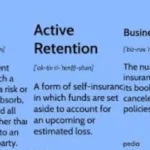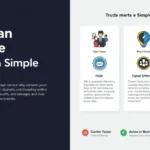In today’s rapidly changing world, organizations must constantly evolve to remain competitive. Change is not only inevitable but essential for long-term success. One model of change management that has garnered significant attention is John Kotter’s fable, My Iceberg Is Melting. This business parable is a powerful metaphor for understanding how organizations can adapt to change in an effective and sustainable way. The story takes place in a colony of penguins living on an iceberg in Antarctica, highlighting how a seemingly stable environment can suddenly become vulnerable, forcing the penguins to confront the reality of change.
This article explores the lessons from My Iceberg Is Melting, the principles it conveys about leadership and change, and how it applies to real-world organizational challenges. We will analyze the eight-step process of successful change introduced by Kotter, examine the psychological and organizational obstacles to change, and discuss practical strategies to navigate uncertainty in dynamic environments.
Summary of My Iceberg Is Melting
My Iceberg Is Melting revolves around a colony of Emperor penguins living on an iceberg. The protagonist, Fred, a curious and observant penguin, discovers a dangerous crack forming in the iceberg, suggesting that their home might soon break apart and melt. The colony is initially resistant to the news, with many of its members preferring to ignore the potential disaster.
Fred brings his concerns to Alice, a no-nonsense leader within the colony, who eventually takes him seriously. Together with the colony’s leadership council, Fred and Alice form a team to investigate the issue further. This team works to communicate the potential risks to the entire colony, gathers support for action, and begins to implement strategies to address the issue.
Through the efforts of Fred, Alice, and their small group, the penguin colony eventually accepts that their iceberg is melting. The colony makes a collective decision to migrate to a safer environment, learning how to adapt to change in the process.
The Eight-Step Process of Change
John Kotter, through his story, outlines an eight-step process for leading change in organizations. Each step plays a critical role in ensuring that change is not only accepted but embraced by members of the organization. Here is a detailed breakdown of each step:
1. Create a Sense of Urgency
In the story, Fred recognizes the urgency of the situation. However, most of the penguin colony is complacent, unaware of the impending crisis. Fred’s first challenge is to convince the leadership council and, subsequently, the rest of the colony, that immediate action is needed.
For organizations, creating a sense of urgency is often the most difficult step. Many employees are comfortable with the status quo and may resist change. Leaders need to effectively communicate the dangers of inaction, using data, trends, or compelling stories to motivate people to recognize the need for change. This urgency propels the organization to take the necessary steps to adapt.
2. Build a Guiding Coalition
Fred cannot implement the change on his own. He enlists the help of Alice and other influential members of the colony to form a guiding coalition. This group works together to plan the necessary steps and build momentum.
In organizations, change initiatives require the support of key stakeholders, including leaders, influencers, and people with specialized expertise. The guiding coalition must be powerful, diverse, and capable of gaining widespread trust and buy-in. Without this coalition, change efforts are likely to fail due to resistance or lack of direction.
3. Develop a Vision and Strategy
Once the guiding coalition is in place, Fred and Alice help the colony create a clear vision for their future. The vision is simple but powerful: find a new home where they can be safe. The strategy outlines the steps needed to achieve this vision.
For organizations, developing a vision that resonates with everyone is crucial. The vision should be aspirational yet attainable, providing a compelling reason for the change. Alongside the vision, leaders need to define a clear strategy for achieving it. This strategy should include timelines, resource allocation, and an action plan.
4. Communicate the Vision
In My Iceberg Is Melting, the guiding coalition effectively communicates the vision to the entire colony, emphasizing the importance of moving to a safer location. They use simple language, repetition, and visual aids to convey the urgency and the plan.
In organizations, clear and frequent communication is essential for driving change. Leaders must ensure that everyone understands the vision, the reasons for the change, and the role each person will play in the process. Effective communication fosters transparency, trust, and engagement.
5. Empower Others to Act on the Vision
Once the colony understands the vision, Fred and Alice encourage the penguins to take action. They remove obstacles, provide guidance, and empower others to contribute to the solution.
In the business world, organizations must empower employees at all levels to participate in the change process. This means removing bureaucratic barriers, providing the necessary tools and resources, and fostering a culture of innovation. Employees should feel confident that their efforts will contribute to the overall success of the initiative.
6. Generate Short-Term Wins
Throughout the penguin colony’s journey, the guiding coalition celebrates small victories, such as identifying a new iceberg as a potential home. These short-term wins help to build confidence and maintain momentum.
In organizations, leaders should set achievable milestones and celebrate progress along the way. Short-term wins create positive reinforcement and help to maintain motivation, especially in long-term change processes. These victories demonstrate that the change effort is working and encourage others to continue their efforts.
7. Consolidate Gains and Produce More Change
The penguins understand that finding a new iceberg is just the beginning. They must continue adapting to their new environment and remain vigilant about potential future threats.
Similarly, organizations must avoid complacency after achieving initial success. Change is often an ongoing process, and it is important to consolidate gains and continue pushing for further improvements. Leaders should use the momentum from short-term wins to drive additional changes and embed new practices into the organizational culture.
8. Anchor New Approaches in the Culture
Finally, the penguins adapt to their new home and establish new routines, ensuring that the lessons learned from their experience become ingrained in their way of life.
For organizations, lasting change requires embedding new behaviors, attitudes, and practices into the organizational culture. This involves continuous training, reinforcement of the vision, and aligning reward systems with the desired outcomes. By anchoring change in the culture, organizations can ensure that new approaches become part of their identity, rather than temporary adjustments.
Psychological Barriers to Change
One of the key themes in My Iceberg Is Melting is the psychological resistance to change. The penguins initially react with disbelief, denial, and fear. These responses are common in both individuals and organizations when faced with change. Understanding these psychological barriers is crucial for effective change management.
1. Complacency
Many of the penguins are complacent, assuming that their iceberg will remain stable indefinitely. In organizations, complacency often arises when employees feel comfortable with the current state of affairs and see no need for change. Overcoming complacency requires leaders to highlight external threats and challenges that necessitate action.
2. Fear of the Unknown
The fear of venturing into uncharted territory is another obstacle the penguins face. Similarly, employees may fear the uncertainty that comes with change, worrying about their job security, roles, or the organization’s future. Leaders must address these fears by providing clarity, support, and reassurance throughout the change process.
3. Loss of Control
Change often involves a loss of control, as individuals are forced to adapt to new circumstances. In My Iceberg Is Melting, some penguins resist change because they feel powerless over the situation. Leaders can mitigate this by involving employees in decision-making and giving them a sense of ownership over the process.
Applying My Iceberg Is Melting to Real-World Organizations
While the story is a simple fable, its lessons have broad applicability in the business world. Many organizations face challenges similar to the penguins, whether it’s market disruption, technological advances, or shifting customer preferences. Here are some real-world applications of the principles from My Iceberg Is Melting:
1. Navigating Technological Disruption
In industries like retail and manufacturing, technological disruption has forced companies to rethink their strategies. Just as the penguins had to adapt to their melting iceberg, businesses must embrace new technologies to remain competitive. Companies that fail to recognize the urgency of digital transformation risk falling behind, much like a colony that refuses to leave a sinking iceberg.
2. Managing Mergers and Acquisitions
Mergers and acquisitions often create significant organizational change. Leaders must guide their teams through the transition, ensuring that the new company culture, processes, and structures are accepted and embraced. The eight-step change model can be used to build coalitions, communicate a vision, and empower employees during these transitions.
3. Adapting to Market Shifts
Industries like energy and finance are often subject to regulatory changes, economic shifts, and customer behavior trends. Organizations that adapt quickly to these changes are more likely to thrive. By creating a sense of urgency and building a strong guiding coalition, leaders can help their teams navigate uncertainty and seize new opportunities.
Conclusion
My Iceberg Is Melting offers a powerful metaphor for understanding change in organizations. The penguin colony’s journey illustrates the challenges and rewards of adapting to new realities. By following Kotter’s eight-step process, organizations can successfully lead change, overcome resistance, and ensure long-term success.
Change is not easy, but it is necessary for survival in today’s dynamic world. Whether it’s technological disruption, market shifts, or internal restructuring, organizations must be willing to confront uncomfortable truths and embrace new ways of thinking. The story of My Iceberg Is Melting reminds us that even the most stable environments can be vulnerable.











